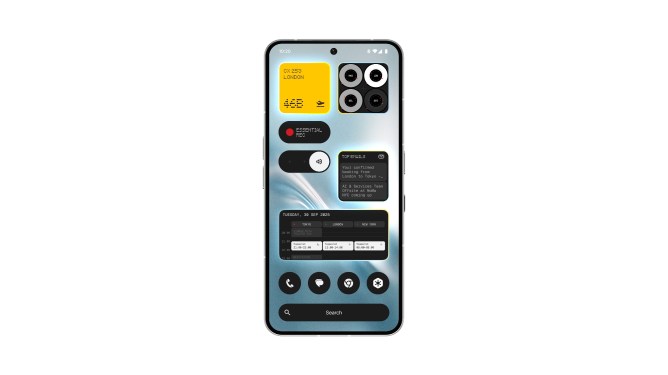The widespread adoption of AI is yielding new technologies and applications on a daily basis, but this expansive potential also places greater strain than ever on the systems that support our devices. The power of AI requires processors to match, capable of handling the increased demands on performance, battery, security, and other crucial functionalities. The x86 architecture led the way for innovation in the last generation, but a change was needed in order to meet the challenges of a pivotal moment. The revolutionary Windows on Snapdragon architecture from Qualcomm Technologies, Inc. takes the step forward into the present that personal computing has been waiting for, introducing a sophisticated new platform to address a new era in processor tech.
Windows on Snapdragon is overhauling how enterprises use their devices, and a shift of this scale naturally sparks fear, uncertainty, and doubt (FUD) among prospective users. Some worry the platform’s promises sound too good to be true; in practice, however, Qualcomm Technologies’ VP of Information Technology Zeeshan Sabir has found they deliver exactly as advertised.
“A lot of people with these misconceptions haven’t tested it,” he says. “Once you test it, you know it’s for real.”
With any transformative technology, users expect an adjustment period and some friction as they adapt to a new system. But for those already fluent in Windows, the learning curve for Windows on Snapdragon is virtually nonexistent, a seamless enhancement of familiar workflows. “You make a few tweaks on the IT side, but only to ensure the user experience is as smooth and minimally different as possible,” Sabir explains. The result is a clean, intuitive interface that enables out-of-the-box productivity without the usual delays of acclimation.
This commitment to user-friendly continuity also shapes Qualcomm Technologies’ approach to developing apps for Windows on Snapdragon. “We have 15,000-plus Windows on Snapdragon laptops in our employees’ hands, all over the globe,” Sabir says. “And that’s because they can get access to the applications they trust.” Qualcomm Technologies has taken a proactive strategy in closely working with software developers to create versions of their apps optimized specifically for Windows on Snapdragon. Built around the platform’s NPU, the apps operate at high performance with a lower battery spend, a must in Qualcomm Technologies’ processing-rich workplace.
That balance between performance and battery, previously thought to be an unavoidable tradeoff prioritizing one or the other, is an exceptional spec standout for Windows on Snapdragon. The energy efficiency enabled by the NPU has yielded a groundbreaking up-to-22-hour continuous charge, with next to no power loss while left in sleep mode. The superior battery and performance remain when unplugged as well; enterprise businesses can rest assured that their workforce’s laptops will run fast and cool under many different circumstances. The latitude to work wherever and whenever frees up users to follow their natural working rhythms, instead of constantly searching for outlets and charging banks. They can hit the ground running on Monday morning with Friday’s charge, or make it through a cross-country flight without worrying about losing power.
No less vital than a laptop that works is a laptop that’s safe. In the information sector, reliable cybersecurity is of paramount importance, keeping sensitive and proprietary data out of the wrong hands. From the moment Windows on Snapdragon powers on, a host of features minimize vulnerabilities, from a secure boot to Zero Trust-adherent sensors to a Trusted Platform Module that helps prevent OS tampering. Even outside of the traditional office network, Windows on Snapdragon upholds a security standard affording users the confidence that they can securely work hybrid or remote.
At the enterprise scale, with hundreds to thousands of employees, device operation is a two-way street between individual users and IT teams. Sabir values Windows on Snapdragon in part for how it eases the tasks of configuring and managing laptops in massive quantities. “Large businesses can support other platforms, but doing that requires much more from IT teams than Windows on Snapdragon,” he says. The processor has been designed to work in harmony with Windows Autopilot and Microsoft Intune, cutting down on tickets and headaches for tech teams.
Sabir has been a dedicated user of Windows himself for more than 25 years, his loyalty earned by an easy-to-use OS with a strong technical foundation. By evolving past the x86 architecture, Windows on Snapdragon preserves these advantages while boldly venturing into the next generation of computing. Whatever misgivings may still be floating around the market, it’s only a matter of time until they’re corrected. Windows on Snapdragon sets a new bar in microprocessors, leaving the competition to catch up. Or, as Sabir says with a smile, “I want to make sure that as a user, I’m getting a better experience than my friends who stay with Mac.”
To learn more about Windows on Snapdragon, click here.
Disclaimers:
Snapdragon branded products are products of Qualcomm Technologies, Inc. and/or its subsidiaries.
Battery life varies significantly based on device, settings, usage, and other factors.



